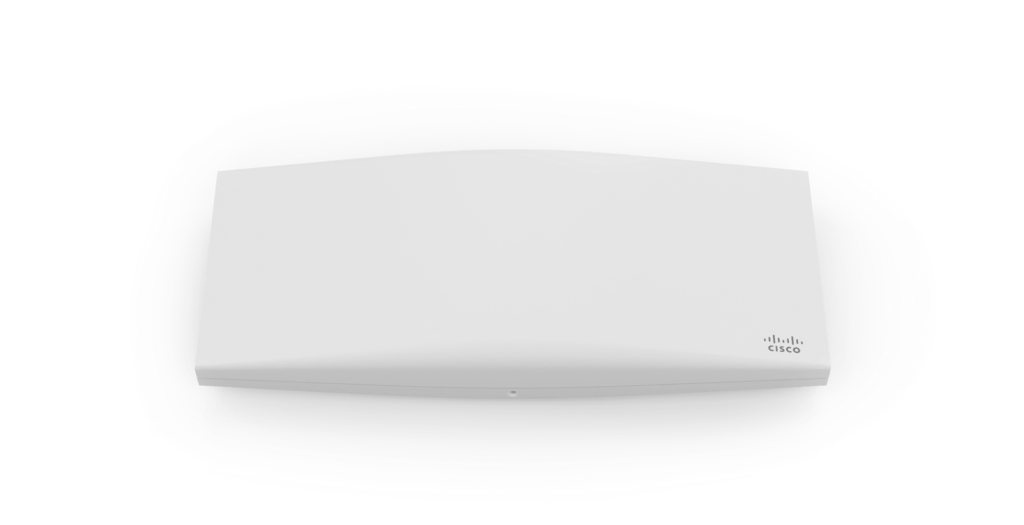In wireless networking, Cisco Meraki continues to stand out with its cutting-edge access points, offering robust solutions for a wide range of environments. The Meraki MR36 and MR46 are two notable models within the Cisco Meraki lineup, both designed to provide high-performance and enterprise-grade security. These access points are tailored to meet the needs of high-density deployments and performance-intensive applications, but choosing between the MR36 and MR46 can be challenging. This article provides a comprehensive comparison of the Meraki MR36 vs. MR46, highlighting their benefits, differences, and shared features to help you make an informed decision.
The Meraki MR36 is a cloud-managed 2×2:2 802.11ax access point that excels in environments like offices, schools, hospitals, and retail spaces. It is designed to deliver high throughput and efficient wireless performance, making it suitable for various next-generation deployments. On the other hand, the Meraki MR46 is a more advanced model with a 4×4:4 802.11ax configuration, offering even greater performance and capabilities for demanding applications and larger spaces.
Both models leverage the power of the Cisco Meraki cloud management platform, ensuring simplified deployment and management. They feature advanced security measures, real-time alerts, and automated RF optimization to maintain optimal network performance. As we delve into the specifics, we’ll explore the unique benefits and distinctions between the Meraki MR36 and MR46 to determine which access point best fits your networking needs.
Meraki MR36 vs MR46 – The Differences

The most significant difference between the Meraki MR36 and MR46 lies in their performance capabilities. The MR36 features a 2×2:2 MU-MIMO configuration, supporting a maximum data rate of 1.5 Gbps. This makes it suitable for environments with moderate client density and standard performance requirements. Its dual-radio design with dedicated WIDS/WIPS and Bluetooth radios ensures efficient wireless security and location-based services.
On the other hand, the Meraki MR46 boasts a 4×4:4 MU-MIMO setup, significantly enhancing its data throughput to 2.98 Gbps. This increased capacity is vital for high-density deployments where multiple devices and performance-intensive applications are common. The MR46’s advanced RF optimization and higher client capacity make it a better choice for large enterprises, educational institutions, and healthcare facilities where robust and reliable connectivity is crucial.
Another notable difference is the power consumption and interface options. The MR36 operates efficiently with a maximum power consumption of 15W, making it suitable for standard PoE environments. In contrast, the MR46 requires up to 30W, necessitating PoE+ for optimal performance. Additionally, the MR46 includes a 2.5G Ethernet port, providing higher wired backhaul speeds compared to the 1G Ethernet port on the MR36.
Features MR36 and MR46 Share
Despite their differences, the Meraki MR36 and MR46 share several core features that make them both excellent choices for modern networking needs. Both access points leverage Wi-Fi 6 technology, ensuring enhanced wireless performance and efficiency. This includes support for features like MU-MIMO and OFDMA, which improve data transmission and network capacity, especially in environments with numerous mobile devices.
Security is a paramount concern for both models, with integrated enterprise-grade security measures such as AES encryption and 802.1X authentication. The dedicated third radio in both access points provides continuous WIDS/WIPS and RF analytics, ensuring robust wireless security and real-time threat detection. Additionally, both models support application-aware traffic shaping, allowing administrators to prioritize mission-critical applications and manage network resources effectively.
Cisco Meraki’s cloud management platform underpins both the MR36 and MR46, offering a combination of cloud management and high-performance hardware. This platform provides a seamless user experience with features like automatic firmware updates, advanced analytics, and real-time alerts. The intuitive dashboard enables administrators to deploy, monitor, and manage their wireless networks remotely, reducing the need for on-site IT staff and ensuring a minimum of hassle.
Conclusion – What to Choose
Choosing between the Meraki MR36 and MR46 ultimately depends on your specific networking requirements and deployment environment. If you are looking for a cost-effective solution that delivers reliable performance for moderate client density, the Meraki MR36 is an excellent choice. Its 2×2:2 MU-MIMO configuration, enterprise-grade security, and simple management make it suitable for small to mid-sized environments like offices, schools, and retail spaces.
However, if your deployment demands higher performance and supports a larger number of clients, the Meraki MR46 is the better option. With its 4×4:4 MU-MIMO setup, higher aggregate frame rate, and advanced RF optimization, the MR46 excels in high-density deployments and performance-intensive applications. It is ideal for larger enterprises, educational institutions, and healthcare facilities where robust and seamless connectivity is essential.
In conclusion, both the Meraki MR36 and MR46 offer outstanding wireless performance and security features, backed by Cisco Meraki’s powerful cloud management platform. By assessing your specific needs and deployment environment, you can choose the access point that best aligns with your requirements and ensures optimal network performance.
Do you have questions about Cisco Meraki products? Contact us today to discuss your needs with Stratus Information Systems experts.

